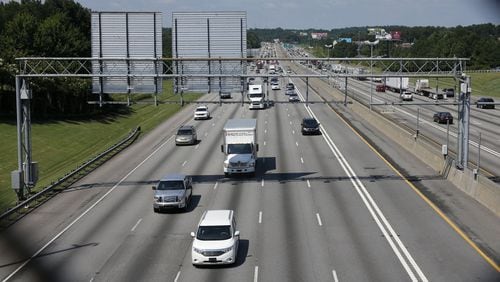The main purpose of this column is to provide answers to common questions on the Atlanta roads. It also offers some explanation or analysis for different initiatives or laws. Sometimes answering such questions opens the floor up to more questions from you, the loyal “Gridlock Guy” readers each week. So I’ve selected a couple to try to answer this week.
First, GDOT followed up on last week’s installment about the messy and dangerous I-20 construction conditions in Carroll County. Passersby stated that the mud from the construction project made the road very slick and caused a string of wrecks. GDOT has since said that they are temporarily widening the shoulders, to help keep motorists from leaving the roadway. They also have asked the contractor to do a better job removing debris from the road and using erosion control devices. The crash count in the area has seemingly gone down, so hopefully the steps work.
This past week, GDOT has been blocking the right-flex lane of GA-400/northbound between the North Springs MARTA Station and Northridge Road during daylight hours, as part of the Transform 285/400 project. This led to a question (I paraphrased it) sent in from two commuters — Alex and Veronica — both of whom ride daily between Alpharetta and Midtown: Why is the lane blocked during afternoon rush hour and why don’t we see anyone working? This is causing a major jam for our rides home!
GDOT says that crews indeed are working, they are just up in the trees working on removing them. I had trouble seeing these workers myself, when I flew past in the WSB Skycopter. But they are out there. As for working during rush hour, GDOT says that since the only lane blocked is the right-flex lane, which is an emergency lane during most hours of the day, they are allowed to block it. They have to work in the daylight, because tree removal at night is dangerous. Finally, expect some of these flex lanes between the Spalding Drive bridge and Glenridge to eventually, permanently go away. Crews are building C.D. lanes adjacent to the through lanes on GA-400, so the convenient shoulder lanes will have to yield to the bigger project.
One motorist, Jefferson, said he is worried about safety and enforcement around the I-85 HOT lanes in Gwinnett. He wrote: “I commute daily southbound on 85 in Gwinnett and often see cars dash across the double white lines to enter the HOT lanes at places where the lines are unbroken. This is of course quite dangerous. Even if these cars all have the Peach Pass, what they are doing violates the law. My question is: Are these drivers being spotted and penalized? As a person who tries to follow the law, I hate to think these people could be getting away with something. And I worry about cars zooming down the HOT lane and perhaps colliding with someone pulling out in front of them.”
This is a great question, as the lanes are marked as they are for a reason. The main goal of the HOT lanes is to create an express lane that moves better than the others. To help with that, people are allowed to enter and exit the lane only at certain times, because that weaving or lane-changing creates delays. Jefferson’s concern about safety is probably secondary to the thought of keeping the lane moving. But safety is important and is a great reason to have better enforcement.
But enforcement in and of itself can create more delays and possibly decrease safety, too. Police and Georgia State Patrol often pull over HOT lane violators on the left shoulder, which is more dangerous than the right shoulder. The flashing lights cause more delays and can cause people to run into each other. Of course, police should enforce the laws, but too much of an effort in this case could create more problems than solve them.






